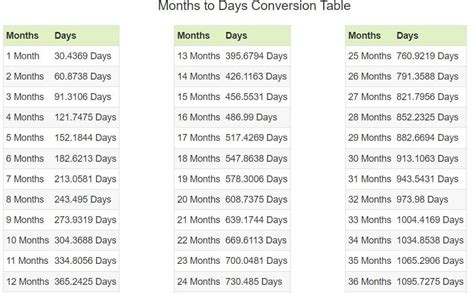How Many Days Is In 3 Months
Arias News
Apr 01, 2025 · 4 min read

Table of Contents
How Many Days Are in 3 Months? A Comprehensive Guide
Determining the exact number of days in three months isn't as straightforward as it might seem. The reason? Months have varying lengths! This comprehensive guide will break down the calculation, explore common scenarios, and provide you with the tools to accurately determine the number of days in any three-month period.
Understanding the Variable Nature of Months
Before we dive into calculations, it's crucial to understand the fundamental reason why this question isn't a simple multiplication problem: months have different numbers of days.
- 30-day months: April, June, September, November.
- 31-day months: January, March, May, July, August, October, December.
- 28-day month (or 29 in a leap year): February.
This variation makes a significant difference when calculating the total number of days across multiple months.
Calculating the Number of Days in 3 Months: A Step-by-Step Approach
There's no single answer to "How many days are in 3 months?" The answer is entirely dependent on which three months you're considering. Let's break down the process:
-
Identify the three months: First, you need to specify the three consecutive months you want to calculate. For example, are you looking at January, February, and March? Or perhaps June, July, and August?
-
Determine the number of days in each month: Next, find the number of days in each of the three months you've chosen. Remember to account for leap years when calculating the days in February. A leap year occurs every four years (except for years divisible by 100 but not by 400).
-
Add the number of days: Once you've determined the number of days in each month, simply add them together. This sum represents the total number of days in your chosen three-month period.
Examples: Calculating Days in Different Three-Month Periods
Let's illustrate this with a few examples:
Example 1: January, February, and March (Non-Leap Year)
- January: 31 days
- February: 28 days
- March: 31 days
- Total: 31 + 28 + 31 = 90 days
Example 2: January, February, and March (Leap Year)
- January: 31 days
- February: 29 days
- March: 31 days
- Total: 31 + 29 + 31 = 91 days
Example 3: June, July, and August
- June: 30 days
- July: 31 days
- August: 31 days
- Total: 30 + 31 + 31 = 92 days
Example 4: November, December, January
- November: 30 days
- December: 31 days
- January: 31 days
- Total: 30 + 31 + 31 = 92 days
The Importance of Specificity: Why "Three Months" is Ambiguous
The phrase "three months" is inherently ambiguous. Without specifying the months, any calculation will be inaccurate. This ambiguity highlights the need for precision when dealing with time calculations, especially in contexts where accuracy is critical, such as:
- Financial calculations: Interest accrual, loan repayments, investment returns.
- Legal matters: Contract deadlines, statute of limitations.
- Project management: Scheduling tasks, milestones, and deadlines.
- Event planning: Determining the duration of events or planning timelines.
Beyond Basic Calculations: Considering Quarters and Fiscal Years
While the above examples focus on consecutive months, calculating the number of days across longer periods is equally important. Consider these:
-
Quarters: A quarter is a three-month period, typically representing one-fourth of a year. However, the exact number of days in a quarter will vary depending on the quarter itself. For instance, the first quarter (January-March) has either 90 or 91 days.
-
Fiscal Years: Many businesses use a fiscal year that doesn't align with the calendar year. Accurate calculation of days across fiscal quarters requires careful consideration of the months involved.
Practical Applications: Using This Knowledge in Real-World Scenarios
Understanding how to calculate the number of days in three months has various practical applications:
- Rental agreements: Calculating rental payments over a three-month period.
- Loan amortization schedules: Determining interest payments and principal reduction over three months.
- Savings calculations: Projecting savings growth over three months.
- Personal budgeting: Planning expenses and income over a three-month period.
Tools and Resources for Accurate Time Calculations
While manual calculation is straightforward, several online tools and resources can assist in more complex scenarios. These tools often include calendars and date calculators which can help you quickly determine the number of days between two specific dates.
Conclusion: The Critical Role of Precision in Time Calculations
In conclusion, determining the number of days in three months requires specifying the months involved due to the varying lengths of months. Accurate calculation is crucial in various contexts, from financial planning to project management. Understanding the principles outlined in this guide ensures accurate results and avoids potential errors that could have significant consequences. Always remember to be precise when dealing with time calculations to maintain accuracy and avoid ambiguity. The seemingly simple question, "How many days are in 3 months?", highlights the importance of specifying details and performing accurate calculations.
Latest Posts
Latest Posts
-
How Many Ounces In A 5lb Bag Of Flour
Apr 02, 2025
-
Items That Start With The Letter K
Apr 02, 2025
-
Side Circle Does A 3 Inch By 3 Inch Square Represent
Apr 02, 2025
-
How Much Is One Fourth Pound Of Butter
Apr 02, 2025
-
What Is The Greatest Common Factor Of 7 And 14
Apr 02, 2025
Related Post
Thank you for visiting our website which covers about How Many Days Is In 3 Months . We hope the information provided has been useful to you. Feel free to contact us if you have any questions or need further assistance. See you next time and don't miss to bookmark.
